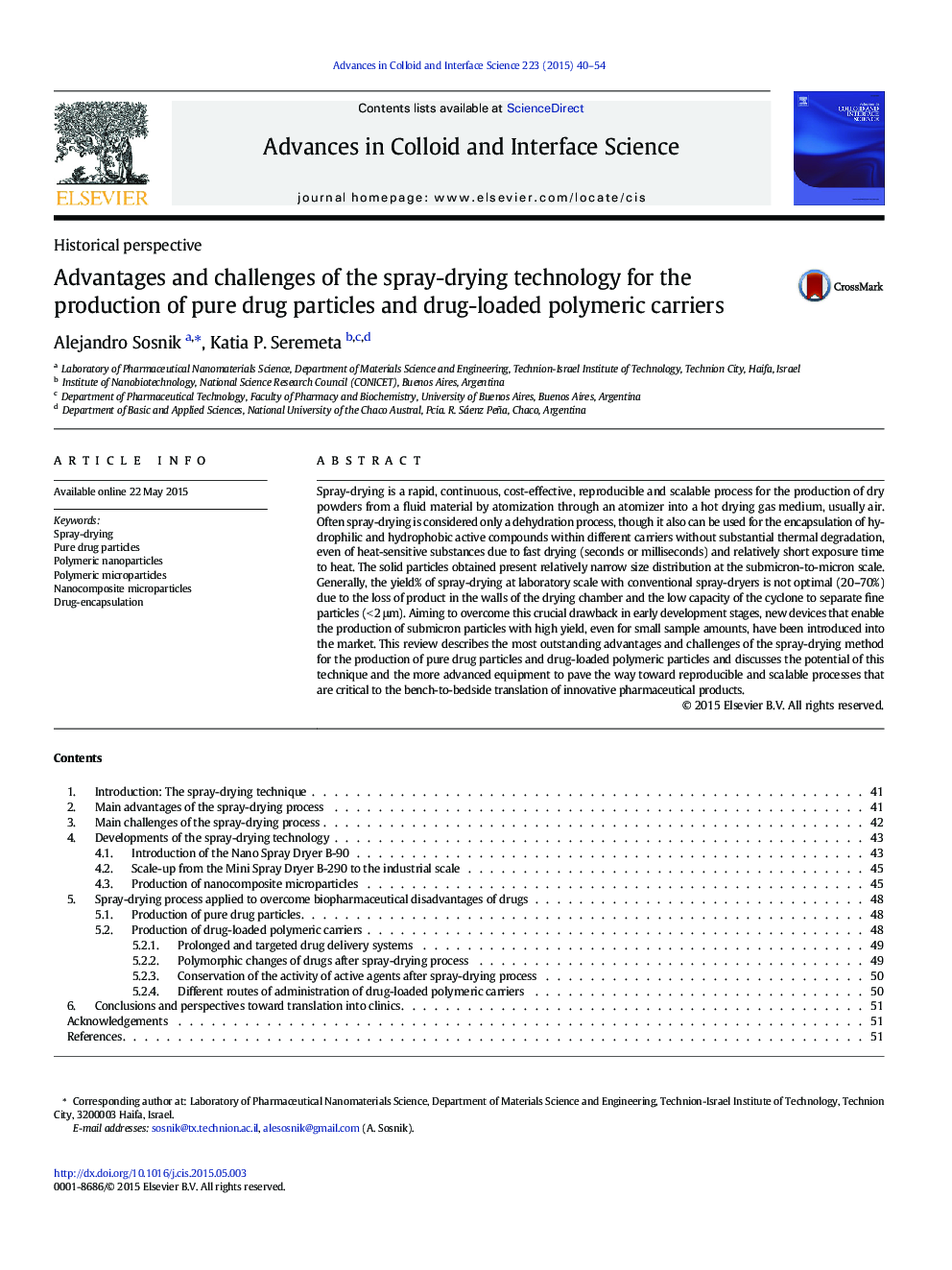| Article ID | Journal | Published Year | Pages | File Type |
|---|---|---|---|---|
| 590648 | Advances in Colloid and Interface Science | 2015 | 15 Pages |
•Spray-drying is a scalable process for the production of dry pharmaceutical powders.•New devices enable pure drug nanonization and production of submicron drug carriers.•Controlling particle properties during process allows specific therapy applications.•Spray-drying is an effective means to overcome biopharmaceutical drawbacks of drugs.•This technology has become a key player for the production of inhalable drugs.
Spray-drying is a rapid, continuous, cost-effective, reproducible and scalable process for the production of dry powders from a fluid material by atomization through an atomizer into a hot drying gas medium, usually air. Often spray-drying is considered only a dehydration process, though it also can be used for the encapsulation of hydrophilic and hydrophobic active compounds within different carriers without substantial thermal degradation, even of heat-sensitive substances due to fast drying (seconds or milliseconds) and relatively short exposure time to heat. The solid particles obtained present relatively narrow size distribution at the submicron-to-micron scale. Generally, the yield% of spray-drying at laboratory scale with conventional spray-dryers is not optimal (20–70%) due to the loss of product in the walls of the drying chamber and the low capacity of the cyclone to separate fine particles (< 2 μm). Aiming to overcome this crucial drawback in early development stages, new devices that enable the production of submicron particles with high yield, even for small sample amounts, have been introduced into the market. This review describes the most outstanding advantages and challenges of the spray-drying method for the production of pure drug particles and drug-loaded polymeric particles and discusses the potential of this technique and the more advanced equipment to pave the way toward reproducible and scalable processes that are critical to the bench-to-bedside translation of innovative pharmaceutical products.
Graphical abstractFigure optionsDownload full-size imageDownload as PowerPoint slide
